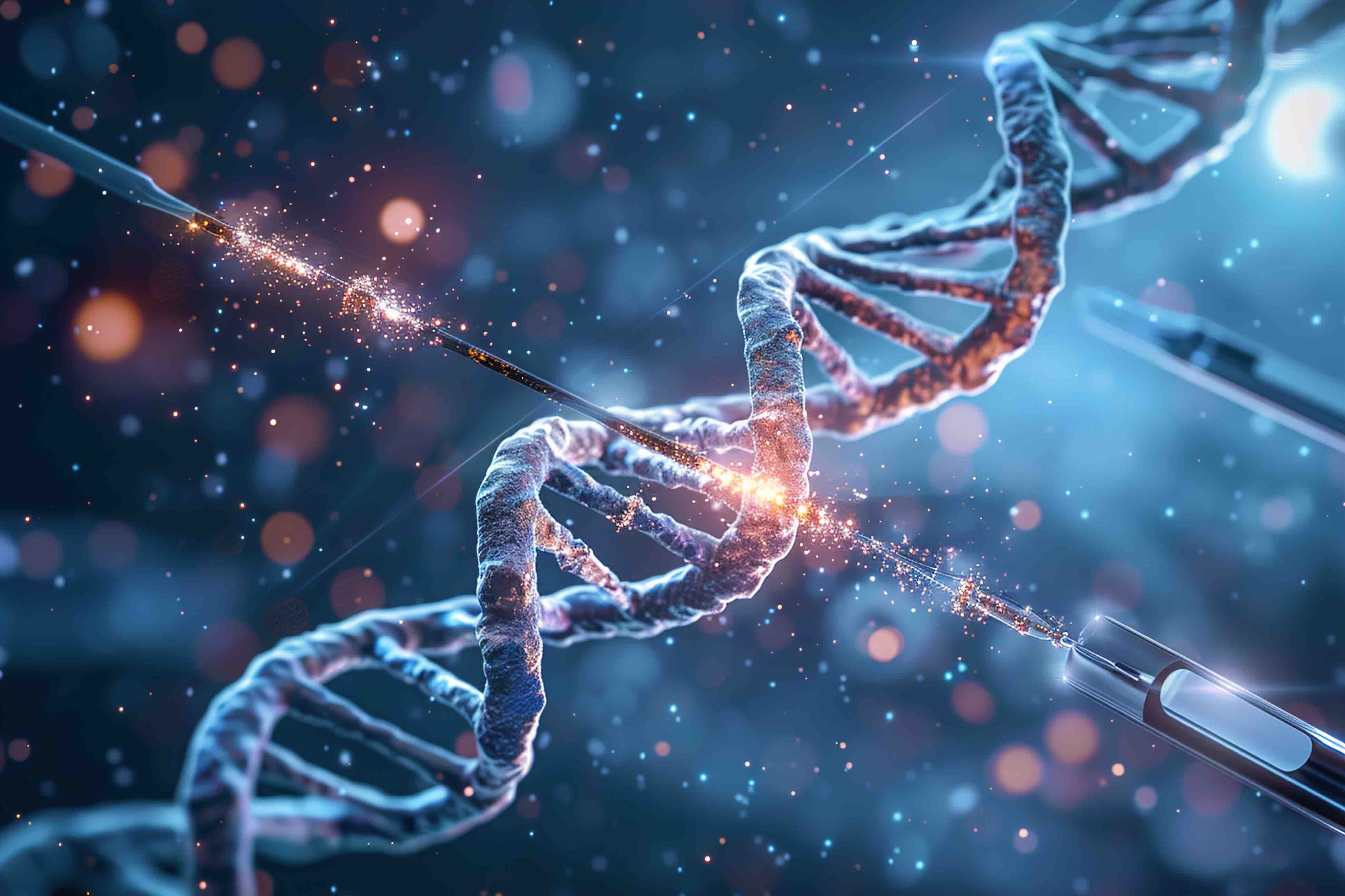- Center on Health Equity & Access
- Clinical
- Health Care Cost
- Health Care Delivery
- Insurance
- Policy
- Technology
- Value-Based Care
Stem Cell–Based Gene Editing Strategy Shows Promise in DMD
Early tests show stem cells can be used to spark expression of a miniature version of the dystrophin protein.
The combination of gene editing and patient-specific stem cells may offer a new ray of hope for patients with Duchenne muscular dystrophy (DMD), according to a new study.1
The authors of the study, which was published in the journal Cells, say their research amounts to a proof of concept that might one day translate into an effective treatment option for some patients with DMD, a severe X-linked genetic disorder associated with mutations in the DMD gene.
“The DMD gene encodes dystrophin, a vital protein that connects the intracellular actin cytoskeleton to the transmembrane dystroglycan complex, thus providing sarcolemma stability during muscle contraction and stretch,” explained corresponding author Rita C. R. Perlingeiro, PhD, of the University of Minnesota, and colleagues. “Mutations in the DMD gene result in disruption of the dystrophin-glycoprotein complex, destabilization of the sarcolemma, degeneration of muscle fibers, and progressive muscle wasting.”
About half of the mutations causing DMD are located between exons 45 and 55, constituting a “hot spot” for DMD deletions, the investigators added.
Gene editing shows promise in Duchenne muscular dystrophy. | Image credit: Degimages - stock.adobe.com

One of the most prominent areas of research of late has been the use of adeno-associated viral (AAV) vector-based delivery of micro-dystrophin, a shortened protein that contains key components of the dystrophin protein. Earlier this month, the FDA expanded its approval for the gene therapy delandistrogene moxeparvovec-rokl (Elevidys) to include ambulatory and non-ambulatory patients ages 4 and older with a confirmed mutation in the DMD gene; the initial approval only applied to ambulatory patients.2
Still, Perlingeiro and colleagues noted AAV-based therapies have several drawbacks, such as potential lung, heart, and liver toxicities, and the presence of pre-existing AAV antibodies in same patients.
“Thus, while early stage studies show encouraging results, the field is still actively tackling these hurdles,” they wrote.
An alternative therapeutic strategy, they said, is cell transplantation using pluripotent stem cells (PSCs). One approach is to combine patient-specific induced stem cells with gene editing. In their new study, Perlingeiro and colleagues developed a gene knock-in approach to correct mutations downstream of exon 44.
“Since this gene editing approach targets a major hotspot for DMD mutations, it could potentially represent a therapeutic option for a significant number of patients through autologous cell transplantation,” they wrote.
To test the approach, the investigators applied it to 2 patient-specific induced PSC (iPSC) lines with mutations in exons 45 and 51. They then used western blot and immunofluorescence staining to confirm the expression of a miniature version of the dystrophin (mini-DYS) protein in corrected myotubes. Next, they studied the strategy in a mouse model, and found that it led to dystrophin expression.
“We show that mini-DYS is expressed in in vitro terminally differentiated myotubes from two gene-corrected DMD iPSC lines, but more importantly, we show in vivo rescue of DYS expression upon the transplantation of myogenic progenitors from both gene-edited DMD iPSC lines,” the authors explained.
The investigators noted that their research represents just one of many efforts to derive an iPSC-based therapy. As such, they said, considerable research is needed to better understand how best to safely and effectively administer such therapies.
“These findings further provide proof-of-concept for the use of programmable nucleases for the development of autologous iPSC-based therapy for muscular dystrophies,” they wrote.
They said the use of gene-editing appears to hold significant promise, both in terms of therapeutic applications and in terms of disease modeling.
References
1. Dhoke NR, Kim H, Azzag K, Crist SB, Kiley J, Perlingeiro RCR. A novel CRISPR-Cas9 strategy to target dystrophin mutations downstream of exon 44 in patient-specific DMD iPSCs. Cells. 2024;13(11):972. doi:10.3390/cells13110972
2. Shaw M. FDA grants 2 approvals to delandistrogene moxeparvovec for DMD. AJMC®. June 20, 2024. Accessed June 28, 2024. https://www.ajmc.com/view/fda-grants-2-approvals-to-delandistrogene-moxeparvovec-for-dmd
Managed Care Reflections: A Q&A With A. Mark Fendrick, MD, and Michael E. Chernew, PhD
December 2nd 2025To mark the 30th anniversary of The American Journal of Managed Care (AJMC), each issue in 2025 includes a special feature: reflections from a thought leader on what has changed—and what has not—over the past 3 decades and what’s next for managed care. The December issue features a conversation with AJMC Co–Editors in Chief A. Mark Fendrick, MD, director of the Center for Value-Based Insurance Design and a professor at the University of Michigan in Ann Arbor; and Michael E. Chernew, PhD, the Leonard D. Schaeffer Professor of Health Care Policy and the director of the Healthcare Markets and Regulation Lab at Harvard Medical School in Boston, Massachusetts.
Read More
Health Outcomes of Dually Eligible Beneficiaries Under Different Medicare Payment Arrangements
December 1st 2025Within the same physician groups, 2-sided risk in Medicare Advantage (MA) was associated with higher quality and lower utilization for dually eligible beneficiaries compared with fee-for-service MA and traditional Medicare.
Read More
